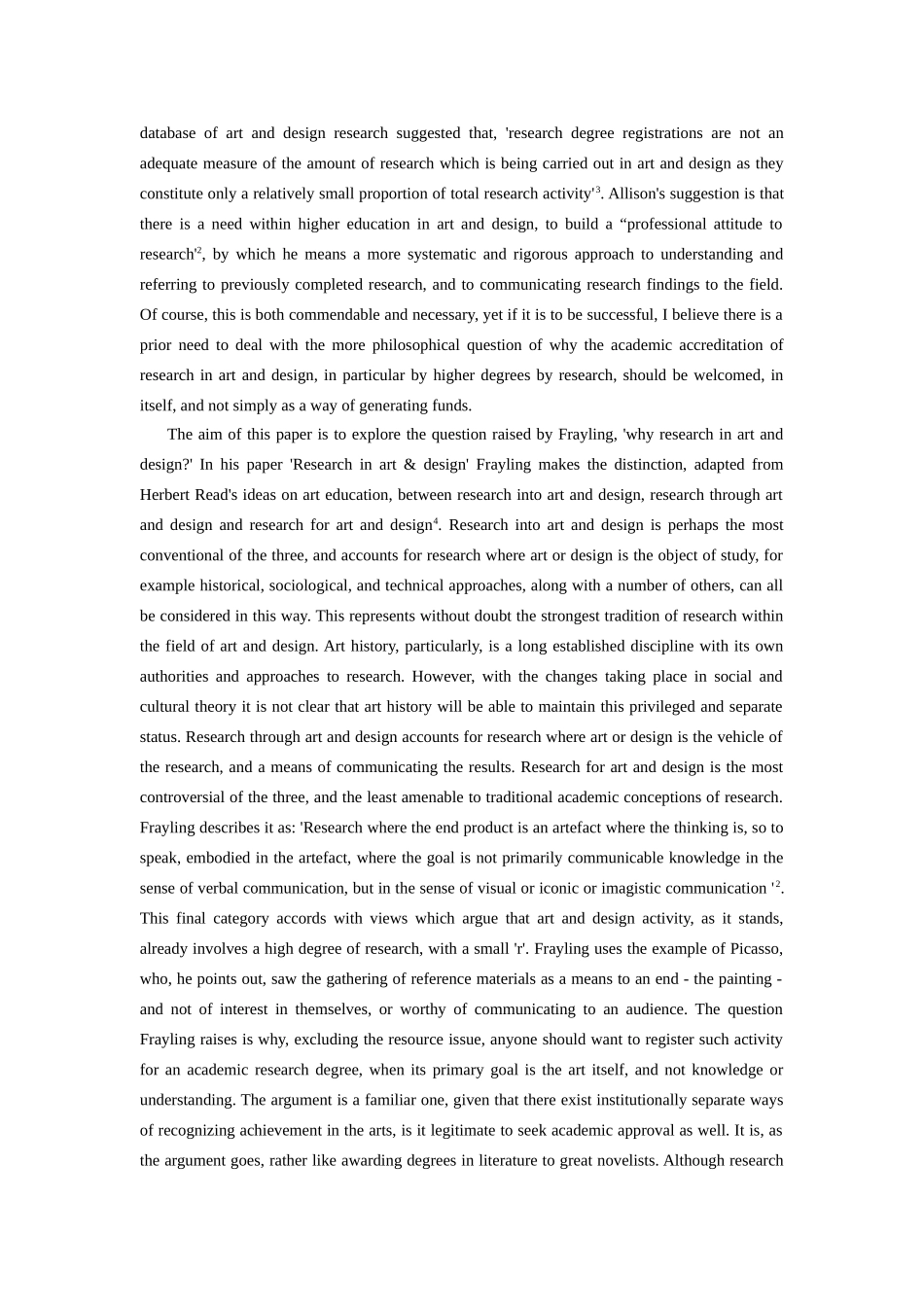2715 单词,1.4 万英文字符,4100 汉字Knowledge and research in art and designBirmingham Institute of Art & Design, University of Central England, Margaret Street,Birmingham B3 3BX, UK The idea of research has tended to elicit two sorts of response from artists and designers. On the one hand, it is perceived as the antithesis of art and design activity, something to do with questionnaires and statistics, test-tubes and laboratories, at one remove from the real world with which artists and designers seek to engage. On the other hand, it is argued, artists and designers have been doing research all along, dealing with issues of technology, materials, meaning and communication, at a sophisticated level. Research is simply an integral part of all art and design activity. Although the latter has much to recommend itself, and I would argue constitutes a distinctive tradition of practical research, neither of these responses is entirely satisfactory. Indeed, it could be suggested that the switch from the former to the latter is simply a pragmatic response to changes in the funding of higher education1, an attempt to seek credit for existing practice, without wishing to change that practice in any way. Recent trends in higher education in art and design have combined to make the question of research increasingly important. There is a growing recognition in art and design that in order to achieve parity of status with the more traditional academic disciplines, and, importantly, to attract sufficient funding to develop its potential, there will need to be a greater attentiveness to the needs of research. As Allison points out, there will be important financial and status implications for higher education inst...


